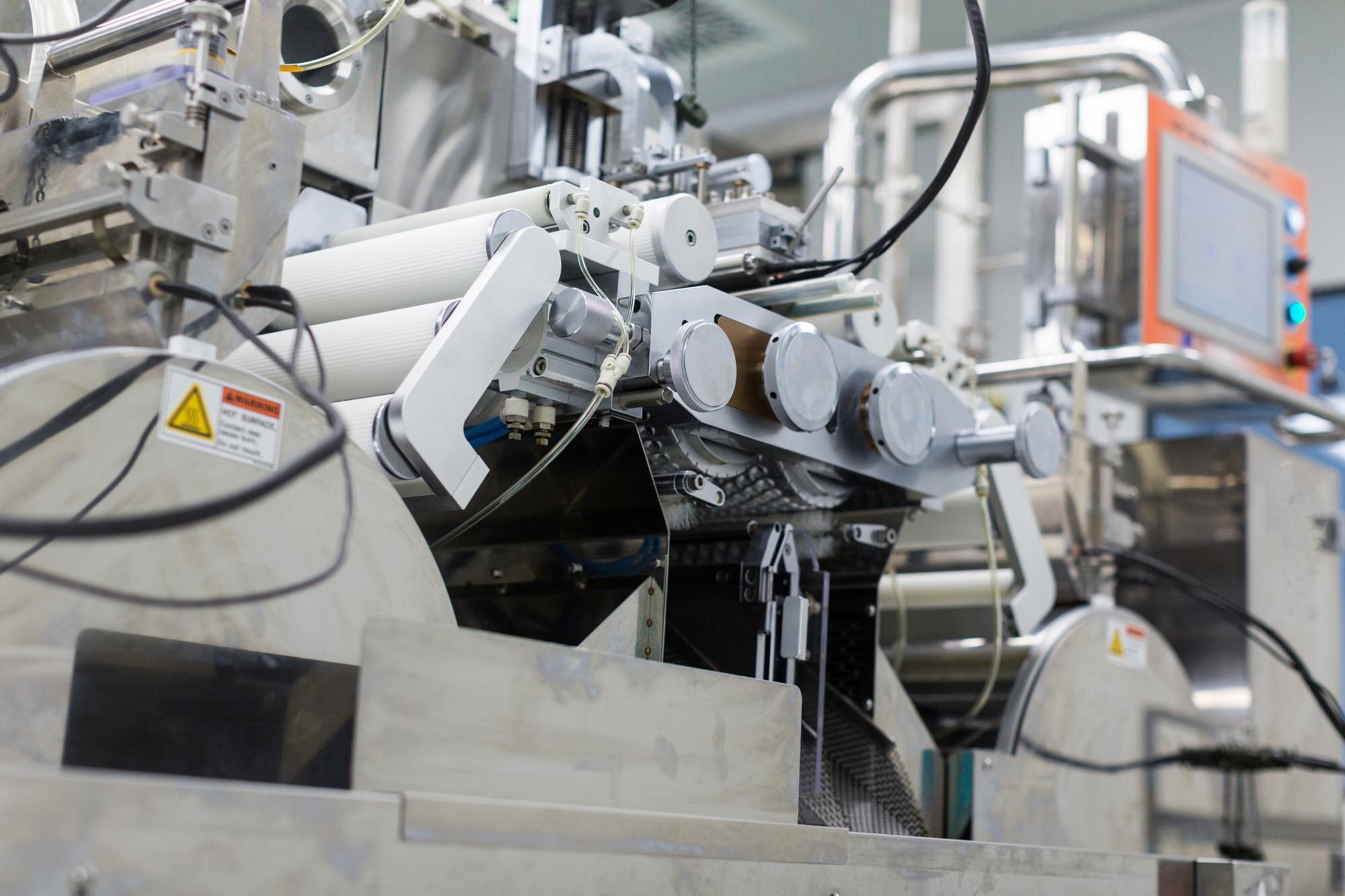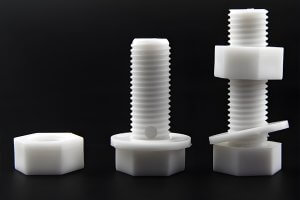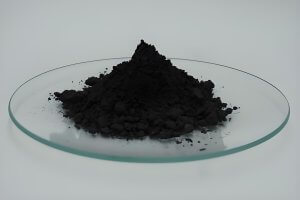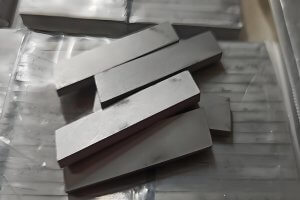The Importance of Surface Treatment in Precision Machining
In the realm of precision machining, the final characteristics of a product are significantly influenced by the surface treatment processes applied. These processes not only enhance the aesthetic appeal of the components but also substantially improve their functional properties, including corrosion resistance, wear resistance, and surface hardness. Customers can now fully and accurately describe their “surface treatment” needs through online machining services.The critical role of surface treatments in extending the lifespan and reliability of precision machined parts cannot be overstated, making it a pivotal area of focus in the manufacturing industry.
Aluminum Beads and Bead Blasting: Understanding the Basics
Bead blasting is a surface finishing technique where fine glass beads are propelled at high speed towards the surface of a workpiece to clean or modify its texture. When aluminum beads are used in this process, the resulting finish can significantly improve a part’s aesthetic and resistance properties. Aluminum beads, known for their softness and lower risk of contaminating the blasted surface, are particularly beneficial for precision components where maintaining the integrity of the workpiece is paramount.
Case Study: A prominent aerospace component manufacturer recently integrated aluminum bead blasting in their surface treatment line. The transition resulted in a 30% improvement in the fatigue resistance of aluminum alloy parts, a critical factor for aerospace applications.
Technical Challenges: Optimizing the Bead Blasting Process
Optimizing the bead blasting process is essential for achieving high-quality finishes while maintaining the structural integrity of precision components. The following are specific measures that can be taken to address the technical challenges associated with bead blasting:
- Bead Selection
- Criteria: Choose beads based on size, hardness, and material to match the specific requirements of the workpiece.
- Impact: Proper bead selection can minimize surface damage and ensure a consistent finish.
- Blasting Pressure
- Adjustment: Carefully regulate the pressure to avoid deformation or excessive abrasion.
- Outcome: Optimized pressure settings lead to uniform surface textures without compromising the material’s integrity.
- Blasting Angle and Distance
- Strategy: Adjust the angle and distance of the blasting nozzle to target areas precisely.
- Benefit: This minimizes the risk of uneven finishes and ensures that hard-to-reach areas are adequately treated.
- Process Duration
- Timing: Control the duration of the blasting process to prevent over-processing.
- Effect: Adequate timing ensures that the desired surface finish is achieved without unnecessary wear on the workpiece.
- Bead Reuse and Replacement
- Practice: Monitor bead condition and replace them when they show signs of wear or degradation.
- Advantage: Regular bead replacement maintains the effectiveness of the blasting process and prevents the introduction of impurities.
- Workpiece Fixturing
- Approach: Secure workpieces properly to prevent movement during blasting.
- Advantage: Stable fixturing ensures consistent exposure to the blasting media, resulting in a uniform finish.
- Post-Blasting Cleaning
- Procedure: Implement thorough cleaning protocols to remove any remaining beads or debris.
- Importance: Cleaning ensures the final product is free from contaminants, which could affect its performance or aesthetic.
- Environmental Controls
- Systems: Use dust extraction and filtration systems to maintain a clean working environment.
- Health and Safety: These systems reduce the inhalation risk of fine particles for operators and minimize environmental impact.
By implementing these specific optimization measures, manufacturers can enhance the efficiency and outcome of the bead blasting process. Each step addresses a particular aspect of the procedure, ensuring that the final product meets the high standards required in precision machining.
Choosing the Right Aluminum Beads: Material Properties and Applications
The selection of aluminum beads is paramount in achieving the desired finish and maintaining the integrity of precision components during bead blasting. Various types of aluminum beads are available, each suited to different applications based on their unique properties such as size, hardness, and shape.
Data Table: Comparison of Aluminum Bead Types
| Bead Type | Size (μm) | Hardness (HV) | Shape | Application | Impact Resistance | Wear Rate |
|---|---|---|---|---|---|---|
| Type A | 100-200 | 110 | Spherical | Aerospace | High | Low |
| Type B | 200-300 | 120 | Irregular | Automotive | Medium | Medium |
| Type C | 150-250 | 115 | Spherical | Medical Devices | High | Low |
| Type D | 100-150 | 105 | Irregular | Electronics | Low | High |
| Type E | 250-300 | 125 | Spherical | Industrial | Very High | Very Low |
| Type F | 150-200 | 110 | Irregular | Consumer Goods | Medium | Medium |
| Type G | 200-250 | 118 | Spherical | Defense | High | Low |
| Type H | 180-220 | 113 | Irregular | Energy | Medium | Medium |
The table above showcases a variety of aluminum bead types, highlighting their diverse applications in different industries. For instance, Type A beads, with their spherical shape and high impact resistance, are ideal for aerospace applications where precision and durability are crucial. Conversely, Type D beads are better suited for electronics, where a gentler treatment might be necessary to avoid damaging delicate components.
Addressing Technical Challenges: Solutions for Surface Treatment in Precision Machining
To ensure the efficacy of surface treatments like bead blasting in precision machining, addressing the technical challenges inherent in these processes is critical. This involves not only selecting the right type of aluminum beads but also optimizing other process parameters such as blasting pressure, angle, and duration.
Table: Solutions to Common Technical Challenges in Bead Blasting
| Challenge | Solution | Expected Outcome |
|---|---|---|
| Inconsistent Surface Finish | Standardize bead size and pressure | Uniform finish across all parts |
| Excessive Material Removal | Reduce blasting time and pressure | Preserve part integrity |
| Surface Contamination | Implement post-blast cleaning | Clean, contaminant-free surfaces |
| Bead Wear and Degradation | Regularly replace beads | Consistent blasting effectiveness |
| Damage to Delicate Features | Adjust blasting angle and distance | Protection of fine details |
| Inadequate Surface Roughness | Increase bead size and blasting time | Enhanced texture and adhesion |
| Operator Safety Concerns | Improve equipment and training | Safe operating environment |
| Environmental Impact | Recycle used beads and filter air | Reduced waste and pollution |
By addressing these challenges with the specified solutions, manufacturers can significantly improve the quality and consistency of their bead blasted components. For instance, standardizing bead size and pressure can eliminate inconsistencies in the surface finish, a critical factor for industries requiring high precision, such as aerospace and medical devices. Similarly, implementing post-blast cleaning ensures that the finished parts are free from any contaminants, enhancing their performance and lifespan.
By carefully considering these tables and the solutions they propose, manufacturers can optimize their bead blasting processes, leading to improved product quality and operational efficiency.
Future Trends: The Development of Aluminum Beads and Bead Blasting Technology
The future of aluminum beads and bead blasting technology in precision machining is likely to be shaped by ongoing innovations aimed at improving efficiency, sustainability, and the adaptability of surface treatments to new materials. Developments in bead material composition, such as incorporating sustainable or recycled materials, and advances in machine learning for process optimization, are areas with significant potential.
Case Study: A research institution recently developed a new type of eco-friendly aluminum bead made from recycled materials. Preliminary tests have shown these beads to be equally effective in bead blasting processes, with the added benefit of reducing the environmental impact associated with bead production.
Other Articles You Might Enjoy
- CNC Machining Parts Factory: Specializing in High-Quality Steel
Introduction to CNC Machining and its Significance CNC (Computer Numerical Control) machining is a critical component in modern manufacturing, responsible for executing complex cuts and designs with absolute precision. This…
- Surface Refinement: Leveraging Bead Blasting for CNC Machining
In the realm of CNC machining, surface quality plays a pivotal role in determining the overall performance and aesthetics of the final product. Leveraging bead blasting as a surface refinement…
- Innovative CNC Machining for Advanced Spacecraft Components
Introduction: CNC Machining and its role in Spacecraft Components Computer Numerical Control (CNC) machining has, over the years, proven to be one of the most integral pillars within manufacturing industries.…






